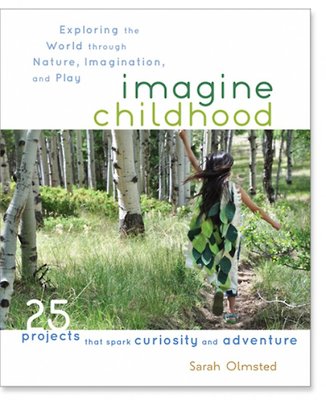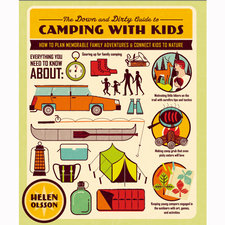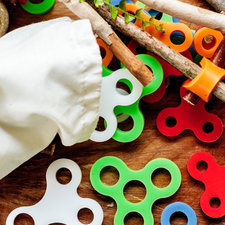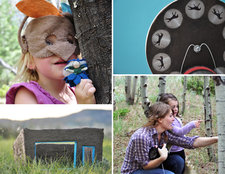Imagine Childhood Writes the Book on Boredom Busters
If a parent had a nickel for every time a child said “I’m bored”, they might be rich. Point those parents away from Pinterest and into an actual book. We know, in this day and age of blogs and social media pitting parent against parent for the most creative craft, a simple book seems revolutionary. And maybe it is. Imagine Childhood: 25 Projects that Spark Curiosity and Adventure is like going off the grid. It’s everything whimsical and magical about the world outside electronics, and forces adults to get into a child’s head. Beleaguered parents are begging their bored kids to play outside. Tired of toys, there will be resistance. But if the outside adventure is made into an excursion instead of an excuse for some peace and quiet in the home, parents and kids alike can experience Summer Camp in a Book.
Author Sarah Olmsted wanted this book to be a celebration of childhood. While she claims not to be an expert, Olmsted comes by her love of nature and art honestly, having worked at the Field Museum of Natural History. There she worked in exhibit design, developing interactive educational activities for permanent and traveling exhibitions before moving on in 2008 to co-found www.imaginechildhood.com.
The book leverages that experience and outlines crafts and activities that invite wonder and play. Naturally, this starts with a cape. As Olmsted says, it starts with nothing special. A single rectangular piece of cloth. But then “somewhere between the flip of the fabric as it snaps through the air to land on a pair of shoulders and the tying of a simple knot… magic happens.” Seasonal capes are not only magical, they’re also educational. As seasons change, so can the cape shape, using fabric to create flowers, snowflakes and leaves, to name just a few possibilities. If you carry any type of fabric in your boutique, consider pairing that with this book as the perfect gift.
Long before that famous mouse crossed the screen and changed animation forever, kids were making flip-books. Amateur? Maybe. But we’re all for things that build drawing and story-telling skills. Olmsted even gives tips and tricks on how to make sure the images stay consistent for a more accurate movie-like experience. And kids can borrow from nature to create the story star. If you’re looking for something to sharpen your school supplies display, look no further. All this craft takes is creativity, paper and pencil.One of the most hauntingly beautiful and creative ideas Olmsted puts in the book is Tree Shadows. As she points out in the book, “Few elements have more theatrical potential than a grouping of trees.” Parents can teach children about shadows and seasons with this project by letting children transfer their own tracings of tree shadows onto fabric to make screens or theatrical room dividers.
Other projects include wands made out of sticks, boats made from newspaper or wood (“boats for imaginary play can lead to real-world aspirations for travel, adventure, engineering and innovation”), mapmaking, and even a paint can banjo.
As Olmsted says in the book, “Children need the ability to lose themselves in the world as they learn about it.” By disconnecting them from gadgets and inserting them into the environment around them, parents can teach their youngsters imaginative play as well as educational lessons about art, shadows, seasons, and light and texture.Parents will love how the book weaves story with instruction. They will also love how most of the projects can be completed economically, often with just what the kids can forage for in their own environment.
Imagine life outside at www.imaginechildhood.com













